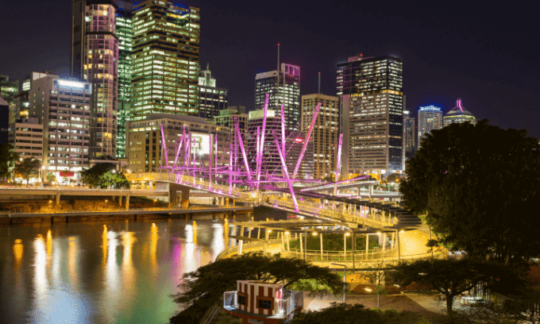Brisbane property market forecast for 2024

Want to know the outlook for the Brisbane property market in 2024? Terry Ryder shares his thoughts on how things are looking.
The overriding theme sweeping real estate across Australia is one of revival and resurgence. And there is no better example of the trend than the Brisbane market. After a period of struggle, with sales activity dropping and prices stagnating, Brisbane is staging a significant comeback.
The Brisbane market was one of the nation’s leaders in the second half of 2020 and throughout 2021, during what has become known as the COVID boom. But late in 2021, we saw the first signs of the Brisbane upcycle starting to fade and then, early in 2022, there was a dramatic decline in the market in the March quarter – undoubtedly exacerbated by the February 2022 floods.
It’s important to note that the decline in Brisbane was not caused by the interest rate rises – the first of which occurred in May 2022 – but was underway much earlier. The Brisbane market had peaked in the September quarter of 2021 and began an 18-month period of decline in which sales activity fell away steadily.
Then, in the June quarter of 2023, came a notable revival in fortunes as consumers adapted to the new normal of higher costs for everything, including mortgages.
This is a national trend but is particularly strong in Brisbane and Queensland generally because the state and its capital city are underpinned by strong fundamentals.
Population growth, particularly internal migration (people moving from one part of Australia to another) strongly favours Queensland, notably Brisbane and South-East Queensland.
Brisbane’s economy and its attractions for new residents are boosted by significant investment in new infrastructure, which generates economic activity and employment, which translates into demand for real estate.
And that process is now being boosted by preparations for hosting the 2032 Olympics. The event is nine years away but the investment in sporting, transport and hospitality infrastructure starts now. It will underpin the Brisbane real estate market for the next decade – although there will be ups and downs.
What is the property market forecast for Brisbane in 2024?
Right now, the Brisbane market is heading towards solid price growth in the latter part of 2023 and into 2024.
PropTrack has Brisbane house prices up 3.75% in the year to August 2023, while CoreLogic records price rises for the year to date (the first eight months of 2023) as 4.0% for houses and 5.9% for units.
At Hotspotting, we expect the rate of price growth to accelerate, given the positive trend with sales activity (always a precursor to price trends).
Our quarterly survey for the Spring 2023 edition of The Price Predictor Index found that almost three-quarters of Brisbane suburbs have positive rankings based on sales activity trends – one of the best results in the nation.
Suburbs with positive rankings (rising, recovering or consistency) have increased from 21% three months ago to 73% of the total in the latest survey.
The number of rising suburbs has trebled in that period, while the number of suburbs ranked with negative sales activity trends has fallen from 181 three months ago to just 62 now. Most of the suburbs that had negative rankings previously are now classified as recovering markets, with sales activity starting to move upwards again after a period of steady decline.
With 73% of suburbs now with positive trends with their sales volumes, Brisbane is on par with the recovering Melbourne market (also 73%) and not far behind the market which had led the nation during the past 18 months – Perth, where eight out of 10 suburbs have positive rankings.
What property markets in Brisbane are the strongest?
The Greater Brisbane revival has spread across most sectors of the market, but the inner-city areas and the northern suburbs are the strongest.
In keeping with trends in other major cities, an uplift in demand for affordable apartments has increased buyer activity in the Brisbane-inner precinct of the Brisbane City Council area.
Of the 23 Brisbane-inner suburbs in Hotspotting’s analysis, 18 have positive rankings (five rising, two consistency and 11 recovering). Milton is a rising market while Auchenflower is a recovering market.
The Brisbane-north precinct of the Brisbane City Council LGA has 41 suburbs on our list, of which 32 have positive trends with their sales activity (11 rising, six consistency and 15 recovering). Rising markets include Aspley, Boondall and Mitchelton.
The neighbouring Moreton Bay Region, which encompasses the northern outer ring areas of Greater Brisbane, has 31 suburbs with positive classifications among the 41 suburbs in our analysis.
Redland City in the eastern bayside areas has mostly positive locations (nine of the 11 suburbs on our report list). Alexandra Hills is one of the rising markets.
Logan City, in the affordable south of Greater Brisbane, has only one rising suburb but 23 consistency or recovering markets.
Cover image source: Pawel Papis/Shutterstock.com
This article was reviewed by our Editorial Campaigns Manager Maria Bekiaris before it was updated, as part of our fact-checking process.

The comparison rate for all home loans and loans secured against real property are based on secured credit of $150,000 and a term of 25 years.
^WARNING: This comparison rate is true only for the examples given and may not include all fees and charges. Different terms, fees or other loan amounts might result in a different comparison rate.
 Owner occupied
Owner occupied
 30% min deposit
30% min deposit
 Redraw facility
Redraw facility
Try our Home Loans comparison tool to instantly compare Canstar expert rated options.
The comparison rate for all home loans and loans secured against real property are based on secured credit of $150,000 and a term of 25 years.
^WARNING: This comparison rate is true only for the examples given and may not include all fees and charges. Different terms, fees or other loan amounts might result in a different comparison rate.





